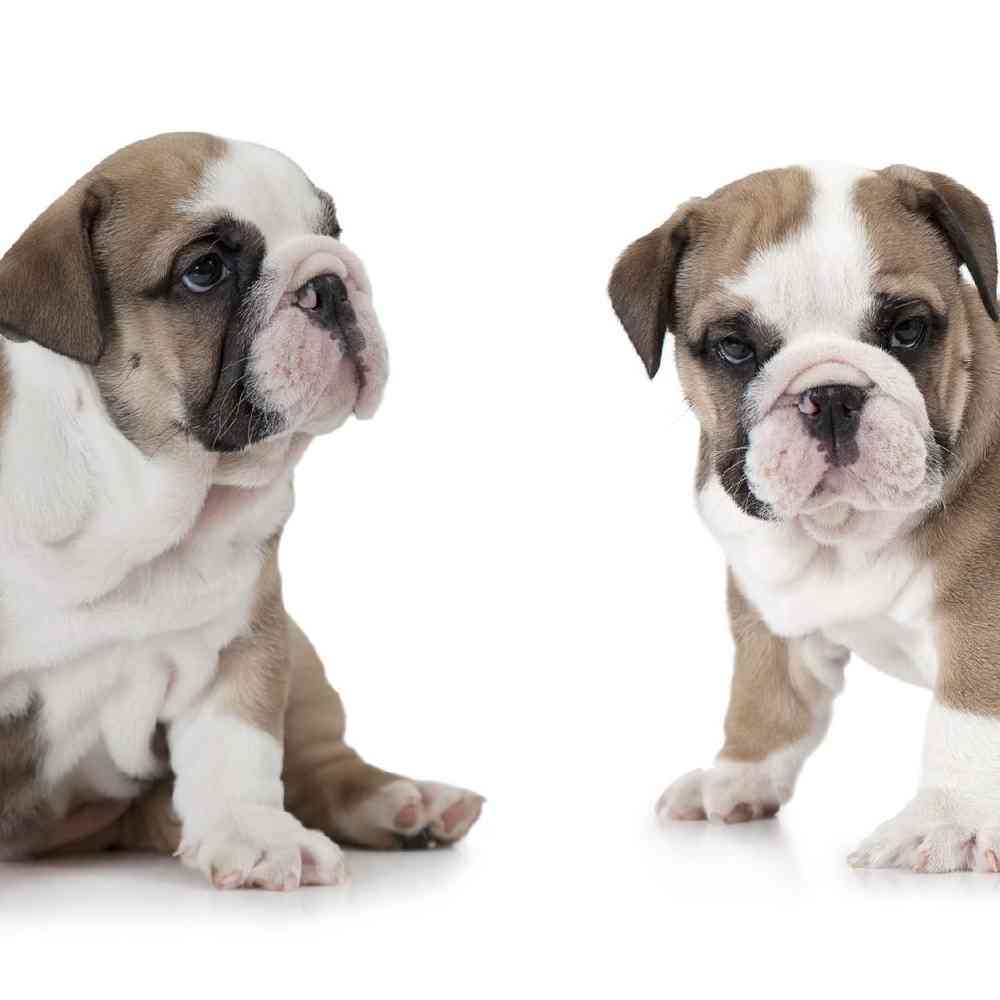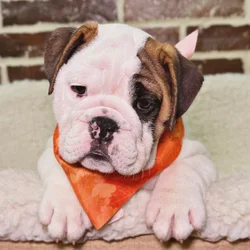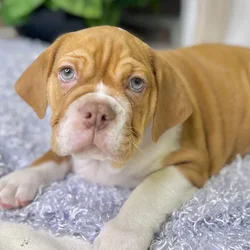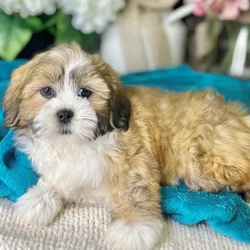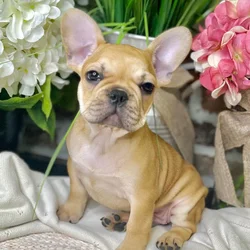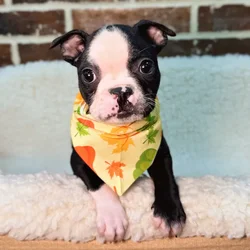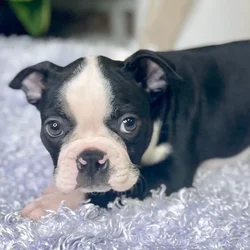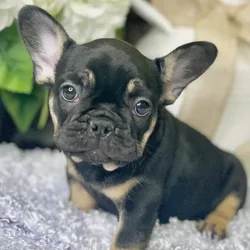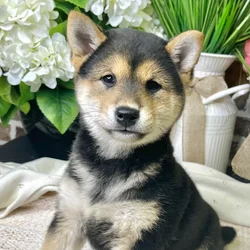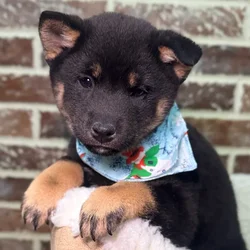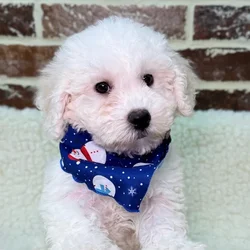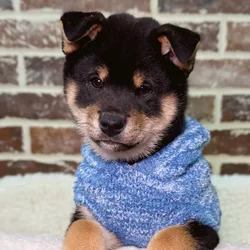Eyes and Eyelids--The eyes, seen from the front, should be situated low down in the skull, as far from the ears as possible, and their corners should be in a straight line at right angles with the stop. They should be quite in front of the head, as wide apart as possible, provided their outer corners are within the outline of the cheeks when viewed from the front. They should be quite round in form, of moderate size, neither sunken nor bulging, and in color should be very dark. The lids should cover the white of the eyeball, when the dog is looking directly forward, and the lid should show no "haw." Ears--The ears should be set high in the head, the front inner edge of each ear joining the outline of the skull at the top back corner of skull, so as to place them as wide apart, and as high, and as far from the eyes as possible. In size they should be small and thin. The shape termed "rose ear" is the most desirable. The rose ear folds inward at its back lower edge, the upper front edge curving over, outward and backward, showing part of the inside of the burr. (The ears should not be carried erect or prick-eared or buttoned and should never be cropped.) Skull--The skull should be very large, and in circumference, in front of the ears, should measure at least the height of the dog at the shoulders. Viewed from the front, it should appear very high from the corner of the lower jaw to the apex of the skull, and also very broad and square. Viewed at the side, the head should appear very high, and very short from the point of the nose to occiput. The forehead should be flat (not rounded or domed), neither too prominent nor overhanging the face. Cheeks--The cheeks should be well rounded, protruding sideways and outward beyond the eyes. Stop--The temples or frontal bones should be very well defined, broad, square and high, causing a hollow or groove between the eyes. This indentation, or stop, should be both broad and deep and extend up the middle of the forehead, dividing the head vertically, being traceable to the top of the skull. Face and Muzzle--The face, measured from the front of the cheekbone to the tip of the nose, should be extremely short, the muzzle being very short, broad, turned upward and very deep from the corner of the eye to the corner of the mouth. Nose--The nose should be large, broad and black, its tip set back deeply between the eyes. The distance from bottom of stop, between the eyes, to the tip of nose should be as short as possible and not exceed the length from the tip of nose to the edge of underlip. The nostrils should be wide, large and black, with a well-defined line between them. Any nose other than black is objectionable and a brown or liver-colored nose shall disqualify. Lips--The chops or "flews" should be thick, broad, pendant and very deep, completely overhanging the lower jaw at each side. They join the underlip in front and almost or quite cover the teeth, which should be scarcely noticeable when the mouth is closed. Bite--Jaws--The jaws should be massive, very broad, square and "undershot," the lower jaw projecting considerably in front of the upper jaw and turning up. Teeth The teeth should be large and strong, with the canine teeth or tusks wide apart, and the six small teeth in front, between the canines, in an even, level row.
